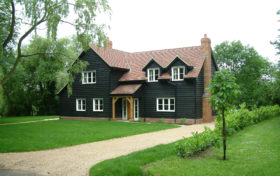
Learn from the experts with our online training course!
Use the code BUILD for 20% off
Learn from the experts with our online training course!
Use the code BUILD for 20% offWith substantial growth expected in the self-build industry over the next three years, more mortgage lenders will be needed to meet increasing demand.
At the 2017 Build Societies Annual Conference, Colin Fyfe, chief executive of Darlington Building Society, warned that unless more lenders cater to self-builders the rising need will not be met, but he was sceptical that they would respond positively.
“There are not enough lenders actively participating to cope with the demand. Will a high street organisation decide it is for them? At the moment, possibly not,” says Fyfe. “The building society sector really have an opportunity to make this one of our markets,”
A report from AMA research anticipates a 7-10% growth per annum in the self-build market by 2020.
There are numerous lenders currently catering to self-builders and specialist brokers such as BuildStore but many high street lenders fall short in this area. Their criteria are best suited to the traditional build systems of volume house builders, while self-builders often opt for less common options such as insulating concrete formwork (ICF) to structural insulated panels (SIPs).
Modern methods of construction (MMC), such as prefabricated timber modules, offer high levels of thermal-efficiency, minimise financial risk and accelerate build times. However, many lenders are unable to aid self-builders using this approach, not least because of the stigma attached to prefabrication in the middle of the last century.
Yet offsite construction offers a great way to meet the shortage of affordable housing in the UK, through its efficiency and the economy of scale. Industry experts are therefore calling for standardisation in the sector to make it easier for mortgage providers to lend with confidence.
“If a borrower asks a lender if they cater for MMC, the lender can’t readily answer that, because what does it actually mean? The opportunities are there in this sector but to meet the government targets it does need funding. What we mean by MMC needs to be standardised as does the method of underwriting,” says Ian Fergusson, managing partner at J & E Shepherd surveyors.
The prejudice that some people have towards prefabrication is outdated. “I think that with MMC, sometimes the terminology used is a problem. Prefab gets bandied about in the press – but what does that conjure up in people’s minds? If you ask people if they would rather their car was built in a rainy field or in a factory, I think I know what the answer would be,” says Paul Broadhead, head of mortgage policy at the Building Societies Association.


Comments are closed.